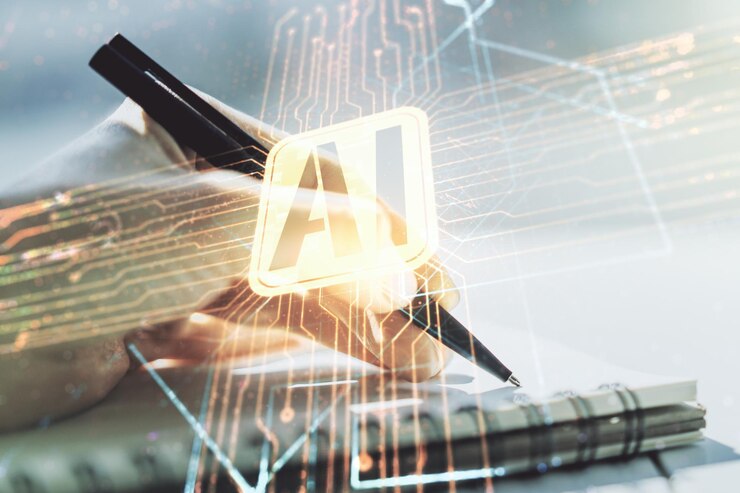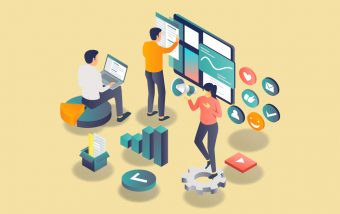Why Good Web Design Is Now A Core Ranking Factor?
Dec 29, 2025

Dec 29, 2025

Dec 26, 2025

Dec 26, 2025

Dec 26, 2025

Dec 24, 2025

Dec 24, 2025

Dec 23, 2025

Dec 23, 2025
Sorry, but nothing matched your search "". Please try again with some different keywords.


Artificial intelligence (AI) is advancing at a rapid pace. With the rise of large language models like GPT-4 and tools like ChatGPT, AI can now generate human-like text, art, code, and more. This has led to both excitement about the possibilities and concern about the implications.
When it comes to AI-generated content, one major area of ethical debate is the potential for misuse, bias, and misinformation. As AI becomes more deeply embedded in content creation, we need to develop the conscience of these systems.
AI has proven adept at mimicking human writing and art. However, these systems lack the reasoning, ethics, and values of a human. As a result, AI-generated content brings risks:
Large language models are trained on vast datasets, including copyrighted works. This means AI-generated text can end up copying or closely paraphrasing existing materials without attribution. For both legal and ethical reasons, this plagiarism poses a major concern.
Tools like an AI content detector are emerging to identify AI-written text. However, detection will prove an ongoing cat-and-mouse game as the technology evolves.
These models can fabricate convincing falsehoods. Bad actors could potentially use AI to spread misinformation at scale. With AI art generators, manipulated media is also a rising concern.
OpenAI has taken steps to mitigate harm by blocking certain dangerous or unethical prompts. But curbing misuse will require ongoing vigilance.
Since AI training data contains societal biases, these can be reflected in AI systems. For instance, a résumé screening tool could discriminate based on race or gender. Mitigating unfair bias will require inclusive datasets and responsible development practices.
To responsibly integrate AI into content creation, we need to instill ethics into its design. This involves both technical solutions and cultural change:
Engineers can develop AI systems that align with human values through approaches like value alignment and machine ethics. For instance, AI could be optimized to avoid plagiarism or maximize creativity.
Techniques like transparency, audibility, and explainability also help ensure AI acts ethically.
Responsible AI requires establishing norms and best practices around development, use, and regulation. Groups like the AI Now Institute and the IEEE Standards Association are helping lead this effort.
Things like ethical design guidelines, testing protocols, and codes of conduct will help cultivate the conscience of AI.
Who builds AI systems impacts their ethics. Having diverse teams develop AI can help reduce harmful bias. Fostering public participation gives people agency in shaping the conscience of AI.
We need ongoing governance to ensure AI acts ethically, including impact assessments and monitoring systems for bias. Laws and regulations around responsible AI development and use will likely emerge.
AI has untapped creative potential for helpful content generation. But we need to proactively address the risks and steer its creativity responsibly.
With AI-generated content, who holds the rights is unclear. New protocols could help establish authorship and handle copyright issues ethically.
If AI content lacks the coherence, accuracy, and intent of human-generated material, it could undermine trust. Developing oversight mechanisms can help maintain information quality.
AI shouldn’t fully replace human creativity. The arts and media have cultural value beyond pure utility. Maintaining uniquely human perspectives will remain important.
If AI automates certain creative jobs, it could displace workers. But it may also augment human creativity. We need to shape AI adoption in a way that benefits all.
AI has incredible potential, but also risks. As it becomes entrenched in content creation, instilling ethics into its design and use is crucial. With thoughtful development and governance, we can guide these technologies toward benefit, not harm. But it will require making the conscience of AI a priority.
The rise of AI comes with immense possibilities. Who would have known five years ago that you could chat with an ai jenna ortega on your phone whenever you like, just as you would with your best friend? But possibility alone is not enough. For AI to improve lives, we need to build our values into its foundation. Only by cultivating the conscience of AI can we unlock its potential for good. The future remains unwritten, but we hold the pen. It is up to us to write the next chapter wisely.
AI creativity tools clearly have immense potential to augment human imagination. But they could also discourage human creativity if over-relied on. The key is finding the right balance – using AI as a generative tool while still valuing the uniqueness of human inspiration.
Systems like Anthropic’s Constitutional AI aim to give AI helpful creative skills while ensuring it defers to people. With thoughtful integration, AI can enhance creative pursuits ranging from writing to visual arts.
The rise of AI art generators like Midjourney, Leonardo AI, DALL-E 2, and Stable Diffusion has been met with awe but also concern. Some worry AI art lacks human originality and could put artists out of work. However, the main ethical issue is copyright and likeness rights, as AI models can replicate existing artworks and people’s faces without consent.
Watermarking AI images and better handling intellectual property in training data are potential solutions. Overall, AI art shows machines can be creative but also must respect human values.
For AI to become an ethical, creative partner to humanity, we need diverse voices shaping its development. But currently, AI researchers skew male and Western. Fostering inclusion of gender, racial, geographical, and socioeconomic diversity in AI fields will lead to safer, more representative, and ethically conscious systems.
Initiatives at organizations like Women in AI and Black in AI promote this. But equitable access to education and technology worldwide is key to unlocking AI’s benefits for all.
AI now stands at the frontier of imagination. Its capacity for human-like creativity provokes both marvel and unease. Systems like GPT-4 display wit, Midjourney, and the upcoming DALL-E 3 conjure fantastical art, and Stable Audio composes melodies. Yet their talents remain untempered by human values.
As AI becomes further woven into creative pursuits, we must instill conscience and thoughtfulness into its code. Only then can we fully tap its potential as an empowering partner, not just a prolific tool. AI brings fire to our fingertips; now we must teach it not to burn.
Read Also:
Mashum Mollah is the feature writer of SEM and an SEO Analyst at iDream Agency. Over the last 3 years, He has successfully developed and implemented online marketing, SEO, and conversion campaigns for 50+ businesses of all sizes. He is the co-founder of SMM.
View all Posts
Why Good Web Design Is Now A Core Ranking Fac...
Dec 29, 2025
The Quiet Arrival of True Color: How E-Ink Te...
Dec 26, 2025
Top 7 SEO Use Cases AI Automation Can Handle ...
Dec 26, 2025
Beyond SEO For Travel Agency: The Psychology ...
Dec 26, 2025
How To Get Verified On TikTok? Tips To Boos...
Dec 24, 2025

